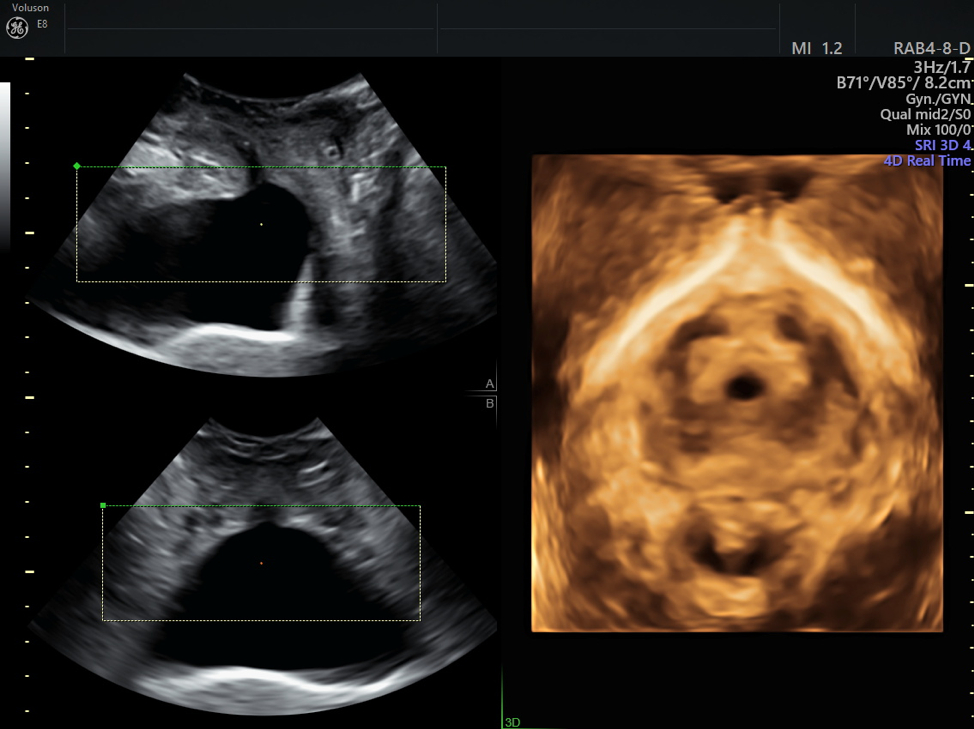The role of ultrasound in treating and diagnosing UTIs (urinary tract infections) has widened as ultrasound technology has become more advanced. It remains the least invasive and most cost-effective mode of imaging the urinary system, making it a useful diagnostic tool for UTIs in both male and female patients of any age. Furthermore, ultrasound is a safer alternative to other types of imaging, such as X-ray or CT scan, which expose patients to radiation or require extended periods of time in an MRI machine.
UTI Diagnosis and Causes
The journal Aging Health states that UTIs are "one of the most commonly diagnosed infections in older adults," and that they are the second-most commonly diagnosed hospital infection for this group, after respiratory infection. In young women, the incidence of UTI is 0.5 to 0.7 per person-year, and more than 10 percent of women over age 65 reported having a UTI diagnosis within the last year.
An article published in the International Journal of Antimicrobial Agents identifies the primary risk factors in young women as "predominantly behavioral," while recurrent UTIs in postmenopausal women are due to "mechanical and/or physiological factors." Recurrent uncomplicated UTI in healthy women is most often caused by bacteria that have not been cleared by antibiotic treatment.
Ultrasound's Role in Diagnosing the Cause of Recurrent UTIs
The National Institute of Diabetes and Digestive and Kidney Diseases (NIDDK) recommends performing a physical exam and obtaining a patient's medical history and medication list before imaging the urinary system for assessing a UTI. When recurrent UTIs are troubling a patient, an ultrasound can determine whether the UTI is uncomplicated or complicated. Both have bacterial causes, but complicated UTIs are related to conditions that make the patient more susceptible. Ultrasound allows the physician to see any physical abnormalities that may be associated with complicated UTIs.
Ultrasound may prove especially useful in diagnosing the cause of recurrent UTIs in postmenopausal women. A study published in Clinical Infectious Diseases identified the primary urologic risk factors associated with recurrent UTIs in this population as incontinence, cystocele and postvoiding residual urine; all three are easily and thoroughly evaluated by ultrasound. The Canadian Urological Association Journal recommends measuring the volume of urine post-void as a means of ruling out recurrent complicated UTIs.
Examinations using 3D ultrasound using for evaluating urinary anatomy can include abdominal as well as axial views through transrectal or transvaginal approaches, so that the structures, sphincters, abdominal anatomy and pelvic floor can all be seen in three dimensions. Although a younger woman is expected to experience a UTI diagnosis more frequently, if this condition persists, she may benefit from an ultrasound to determine whether or not her case is complicated by underlying issues.

An ultrasound image.
Ultrasound for Preventing UTIs
Aside from evaluating the patient who already received a UTI diagnosis, ultrasound is also effective in determining whether a post-surgical patient needs to be catheterized. A 2010 literature review published in the Journal of Clinical Nursing concluded that by examining the bladder with ultrasound after surgical procedures to assess for acute urinary retention, physicians were able to reduce the number of catheterizations performed, and thus the number of associated urinary tract infections.
When it comes to preventing, diagnosing and treating UTIs, ultrasound is not only highly accurate, but also a more comfortable and cost-effective examination. Discuss the possible causes of recurrent UTIs with your patients, and how ultrasound can help with diagnostic and UTI treatment.



